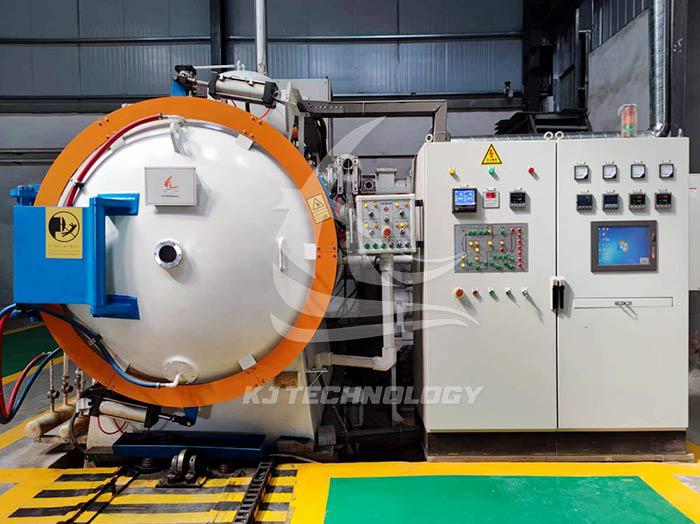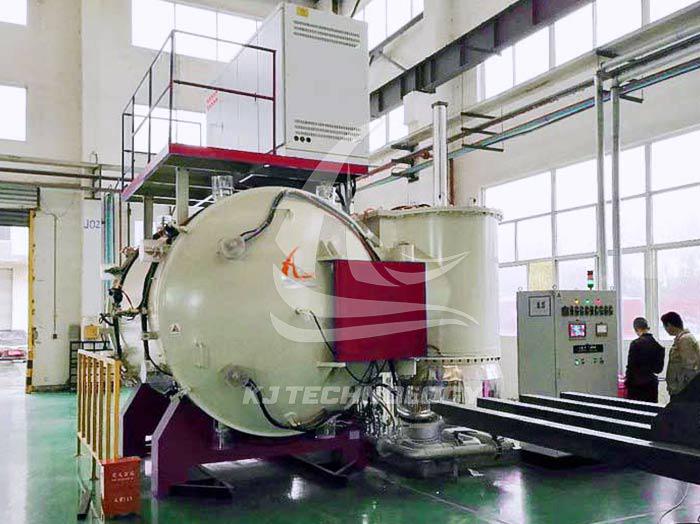Is a large-sized furnace vacuum heat treatment furnace easy to use?
 09-29-2025 Author: KJ technology
09-29-2025 Author: KJ technology
Large scale furnace vacuum heat treatment furnaces perform well in specific scenarios, with advantages such as preventing oxidation and decarbonization, improving material properties, and purifying surfaces. However, they have limitations such as high equipment costs, complex maintenance, and strict operational requirements. Whether they are effective or not needs to be comprehensively judged based on specific needs. The following provides a detailed analysis from both advantages and disadvantages:
advantage
Prevent oxidation and decarbonization
In a vacuum environment, the oxygen partial pressure is lower than the decomposition pressure of oxides. When the workpiece is heated, it not only does not oxidize, but also reduces the existing oxides on the surface. For example, after vacuum quenching, the plasticity and impact toughness of steel parts are significantly improved, extending their service life. This feature is particularly suitable for precision parts that require high surface quality, such as titanium alloys and high-temperature alloy components in the aerospace industry.
Vacuum degassing and purification function
When the workpiece is heated under vacuum conditions, the gases absorbed internally (such as hydrogen, nitrogen, carbon monoxide) will move towards the surface and be released, reducing material brittleness and improving mechanical properties. At the same time, decomposition products such as surface oil stains and oxide films are discharged outside the furnace, achieving surface gloss purification. For example, after vacuum aging, the TC4 titanium alloy accumulator has extremely high surface smoothness and meets the mechanical performance standards.
Wide applicability of the process
It can achieve all heat treatment processes such as quenching, annealing, tempering, carburizing, and nitriding, and supports various cooling methods such as gas quenching, oil quenching, nitrate quenching, and water quenching. In addition, it can also be used for vacuum brazing, sintering, surface treatment, etc., to meet complex process requirements. For example, after vacuum aging strengthening treatment, the elastic alloy 3J1 parts have minimal deformation and are all qualified.
Energy conservation and environmental protection
Adopting advanced heating technology and insulation materials, it has high thermal efficiency and reduced energy consumption compared to traditional furnace types. At the same time, the vacuum environment reduces harmful gas emissions, meets environmental requirements, and the equipment operates with low noise, making it environmentally friendly.
High degree of automation
Equipped with advanced control system, it can monitor and automatically adjust multiple parameters such as temperature and pressure in real time, reduce manual intervention, and improve production efficiency and stability. For example, the temperature control accuracy can reach ± 5 ℃ to ensure process repeatability.








